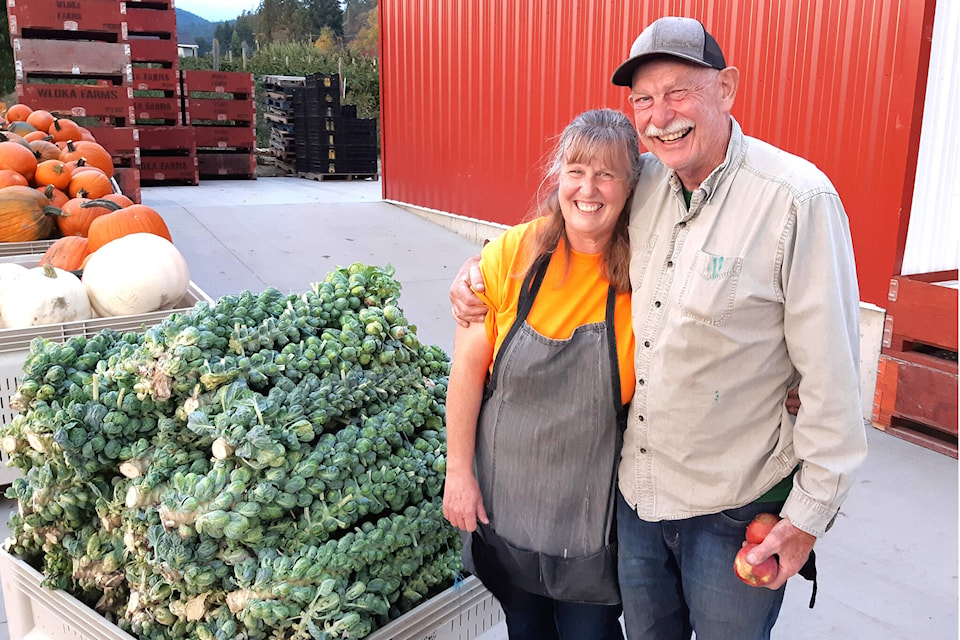At Wloka Farms Fruit Stand, we produce 32 varieties of winter squash.
Winter squash is differentiated from summer squash in that it is left on the vine long enough that the skin hardens, allowing for longer storage. Having said that though, it is important to note that most squash can be eaten at any stage of maturity from flower to fully mature. Texture and flavour will vary at each stage. When squash is threatened by temperatures cooler than five degrees Celsius, don’t be afraid to harvest and experiment with the under-ripe product. Just plan to use it up quickly, as the immature squash will not store well.
To store squash, it should first be fully mature. A basic test for maturity is the thumbnail test. At the stem end, try to pierce the skin with your thumb nail. If it goes in easily and you are able to pull the skin back, the squash will not store for long (a couple of weeks only) so should be consumed soon. If you can pierce the skin but not pull back flesh, the squash is fairly mature and will store under ideal conditions for some time. If you cannot pierce without great effort, your squash is hardened off to full maturity and should store for the winter very nicely. Another important point to note is an intact stem. If the stem has broken off, the area left is very porous and bacteria may enter easily and hasten rot.
Ideal conditions for squash storage are a cool, dry place – about 10 to 14 degrees Celsius. In my experience, though, it is the ‘dry’ which is the operative word. Think about where you have the most dust bunnies in your house: under the bed in a spare bedroom (generally cooler than the rest of the house), on a shelf in a linen closet (no direct heat source there), or in a cubby under the stairs. Unfortunately, most root cellars and garages are too damp for squash storage. And avoid leaving squash directly on a cement floor; instead sit it on wooden shelves or even a piece of cardboard.
To help squash stay fresh in storage, wipe it down once with a rag soaked in 4-1 ratio of water and vinegar. Squash essentially rots from the outside in, so the vinegar solution will help to kill any bacteria which may cause rot. For very textured squash or a large number to wipe down, make a vinegar/water bath and roll the squash around in it to ensure complete coverage. Then allow the squash to fully air dry.
If your squash does start to go bad, cut out the rotting part and enjoy the rest of the squash. The taste will not be impacted by the spoiled portion.
Because of the great variety of squash, you can eat it every night of the week and have a different vegetable each time - depending on which you choose and how you cook it. And, because squash may be eaten raw, you really cannot ruin it - a bit underdone is fine and overdone just means a creamier squash!
Barb Wloka is owner/operator of Wloka Farms Fruit Stand in Creston, B.C. She and her husband, Frank, have farmed for over 40 years and have learned a lot through trial and error. To grow their knowledge base, both continually research and collaborate with others. They also pick up tidbits of information from staff and customers. Learning to farm is a life-long educational experience!
READ MORE: Wloka Farms: Canning 101
